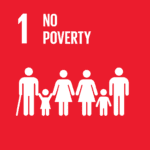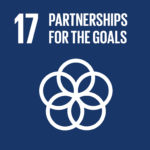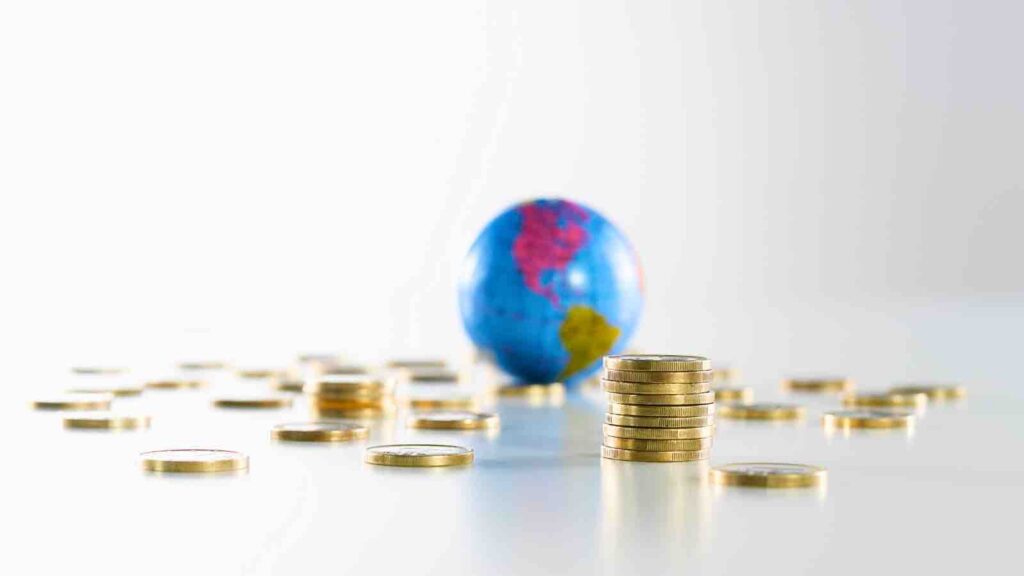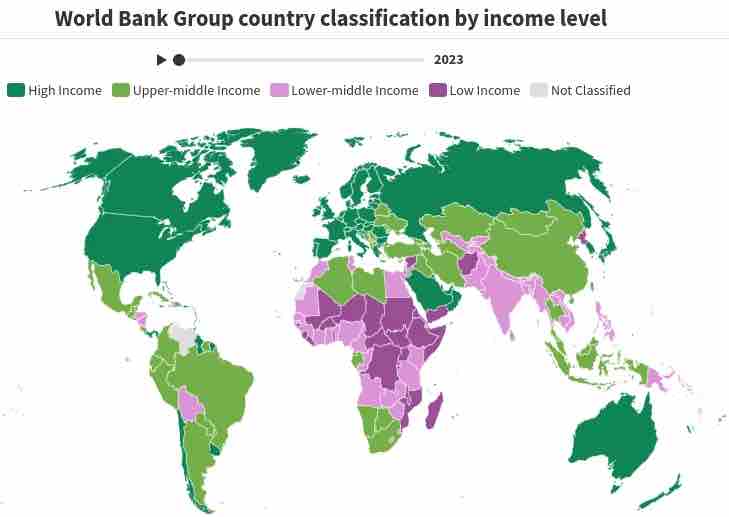The World Bank Group assigns the world’s economies to four income groups: low, lower-middle, upper-middle, and high. The classifications are updated each year on July 1, based on the GNI per capita of the previous calendar year
In its annual reassessment of global economies, the World Bank has released its country classifications by income level for 2024-2025, revealing significant shifts in the economic status of several nations. The classifications, updated each July based on the previous year’s Gross National Income (GNI) per capita, offer a snapshot of the world’s evolving economic landscape.
RELEVANT SUSTAINABLE GOALS



World Bank country classifications by income level for 2024-2025
The World Bank categorizes economies into four groups: low, lower-middle, upper-middle, and high-income. These classifications, determined using the Atlas method introduced in 1989, aim to reflect a country’s level of development using GNI per capita as a key indicator.
Since the late 1980s, the global economic landscape has undergone substantial transformation. In 1987, 30% of reporting countries were classified as low-income and 25% as high-income. By 2023, these ratios had shifted dramatically, with only 12% in the low-income category and 40% in the high-income bracket.
Regional variations in these shifts are stark. South Asia has seen a remarkable decline in low-income countries, from 100% in 1987 to just 13% in 2023. Conversely, the Middle East and North Africa now have a higher share of low-income countries than in 1987. Latin America and the Caribbean have witnessed a significant increase in high-income countries, from 9% to 44% over the same period.
This year’s reclassifications reflect diverse economic realities. Bulgaria, Palau, and Russia have moved up to the high-income category, each buoyed by different factors including post-pandemic recovery and increased military-related activity.
Algeria, Iran, Mongolia, and Ukraine have ascended to the upper-middle-income category. Algeria’s rise is largely attributed to a comprehensive revision of national accounts statistics. Iran’s growth was driven by oil exports, while Mongolia benefited from expansions in mining. Ukraine’s reclassification, despite ongoing conflict, stems from economic recovery and demographic shifts.
In a sobering development, West Bank and Gaza was the only economy to be downgraded, moving from upper-middle to lower-middle-income status due to the impact of conflict in the region.
These classifications, while primarily statistical, carry significant implications for development financing and aid allocation. As the global economic landscape continues to evolve, these annual reassessments provide crucial insights into the changing dynamics of the world economy.
Data for GNI, GNI per capita, GDP, GDP PPP, and Population for 2023 are now available on the World Bank’s Open Data Catalog. Note that these are estimates and may be revised. For more information, please contact data@worldbank.org.
Lead image courtesy of Gerenme from Getty Images Signature
You may also be interested in :
Gender Parity Still 134 Years Away, World Economic Forum Finds



